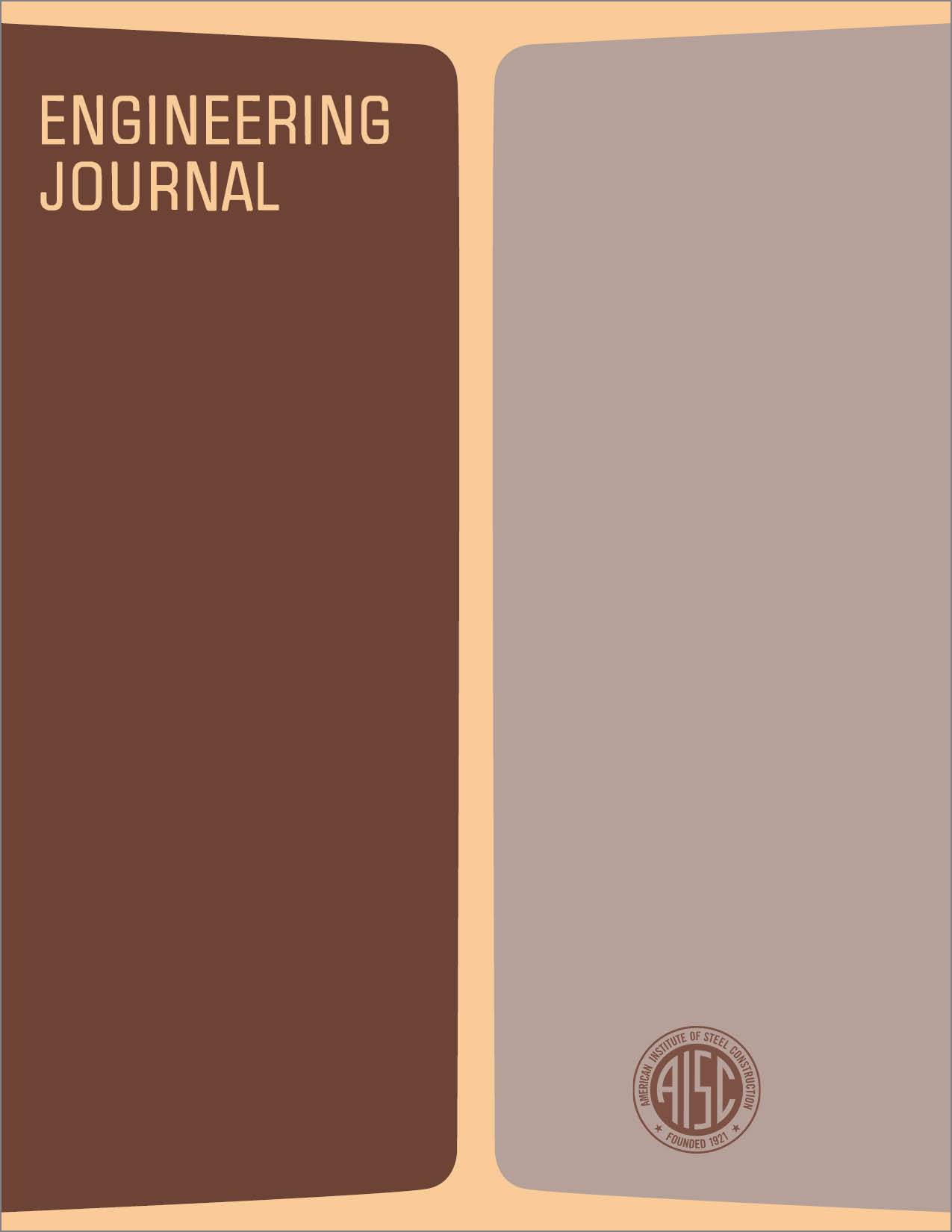Effect of Burrs on Bolted Friction Connections
DOI:
https://doi.org/10.62913/engj.v22i3.447Abstract
Burrs develop at the edge of drilled or punched holes during the fabrication process. But, depending on the speed with which the bolt hole is formed and the condition of the drills or punching equipment, burrs may be large enough to prevent the solid seating of connected parts, as required by the present Research Council on Structural Connections (RCSC) Specification for Structural Joints Using A325 or A490 Bolts, hereafter referred to as the RCSC Specification. Since it is not clear in the specification what size burr will prevent contact within the faying surface, fabricators go through the expense of removing all burrs prior to assembly to satisfy this provision of the specification. Although a considerable amount of research has been directed towards evaluating the static shear capacity of joints with solid seating of the connected parts, there are no data that address the slip resistance of joints when the plates are not in solid contact because of burrs at the edges of the holes. This paper deals with the results of an experimental program carried out at The University of Texas-Austin to determine the effect of burrs on the slip performance of both paint-free and painted connections, and also to examine the effect of burrs on the clamping force produced by the turn-of-nut installation.

